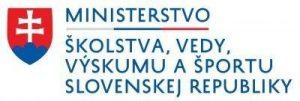For a new working paper, the Roma Education Fund commissioned Simone Bloem and Christian Brüggemann to investigate the use of the Romani language in the OECD-administered Programme for International Stud
For a new working paper, the Roma Education Fund commissioned Simone Bloem and Christian Brüggemann to investigate the use of the Romani language in the OECD-administered Programme for International Student Assessment (PISA) survey. This research is part of an advocacy effort to lobby PISA to include Romani language among the choices that are part of its student survey of fifteen-year-olds, especially for countries in Central and South Eastern Europe and the Balkans that participate triennially. Such a step by the administrators would enable organizations like the Roma Education Fund, not to mention national education authorities, to better understand the dynamics of Roma student performance and achievement. The Roma Education Fund has developed models that have been proven to spur Roma student school success in early, primary and secondary education.
In “Student Performance and Inequality in Central and South Eastern Europe: Cross-country Comparison and Case Study on Romani-speaking Students in Slovakia” readers will find a discussion of the potentials and limitations of measuring educational inequality between Roma and non-Roma based on international student assessment data. First, the paper gives an overview about available data sources that have been used to measure educational inequalities between Roma and non-Roma: national census surveys, international household surveys and international student assessments. Second, the paper analyzes educational inequalities in REF focus countries that participated in PISA 2012. Third, the paper compares the results on student performance, family and schooling characteristics of the Romani-, Slovak- and Hungarian-speaking students in Slovakia based on PISA 2012.
To read more by Bloem and Brüggemann, click here.

















